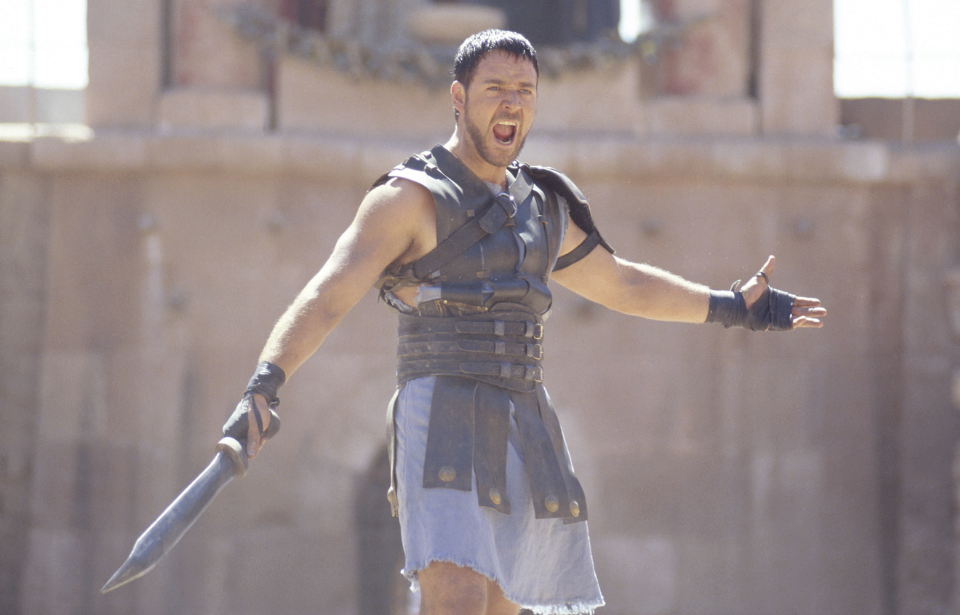Gladiator (2000) is an acclaimed ancient Roman historical epic, directed by Ridley Scott and starring Russell Crowe. Set during the reign of Emperor Marcus Aurelius, the film masterfully blends action, drama and spectacle to create a captivating cinematic experience. The following are eight behind-the-scenes facts about Gladiator that you probably haven’t heard before.
A 19th-century painting inspired Ridley Scott to direct Gladiator
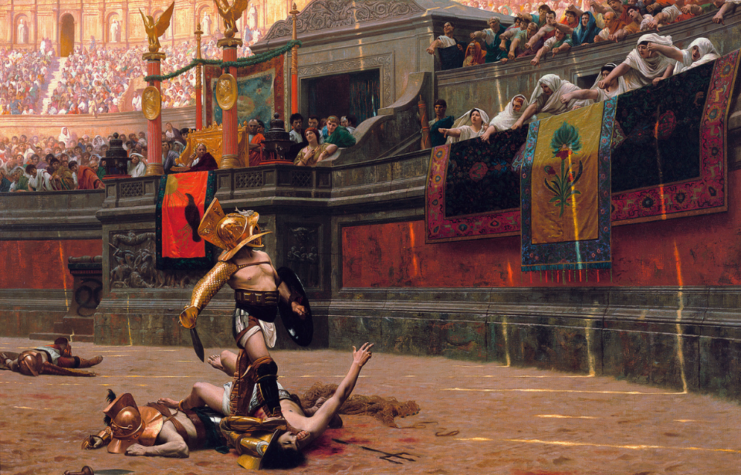
In an effort to convince Ridley Scott to direct Gladiator, the producers showed him a copy of Jean-Léon Gérôme’s Pollice Verso. The painting depicts a gladiator standing upon the neck of another, looking up toward the Vestal virgins who signal death for the defeated man with a thumbs-down gesture. Its title is Latin for “With a Turned Thumb.”
Scott was captivated by the scene, saying, “That image spoke to me of the Roman Empire in all its glory and wickedness. I knew right then and there I was hooked.”
Burning down a real-life forest
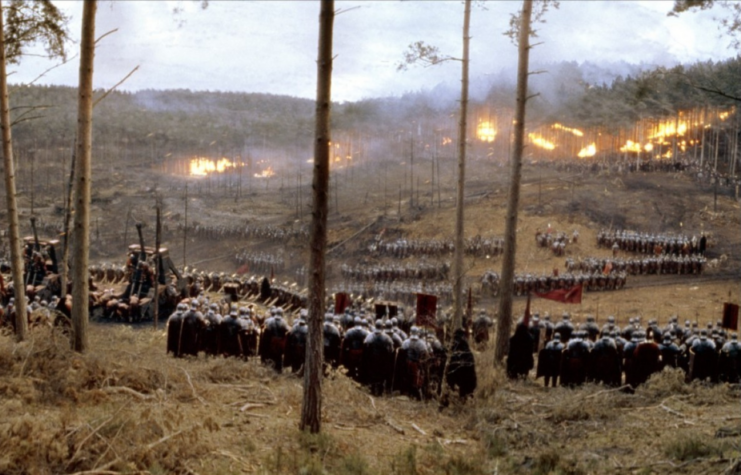
Our second Gladiator fact centers around the opening scene of the film. It shows the Roman Army, commanded by Maximus Meridius, facing off against a large group of German tribes. The latter prepare to fight, standing at the edge of a large forest, which they set ablaze as the Romans launch their attack.
What many might not know is that this wasn’t CGI – it was a real fire and a real forest. The scene was shot at Bourne Woods, near Farnham, England. The Royal Forestry Commission had slated the region for deforestation, and Ridley Scott got permission to burn down the forest.
Russell Crowe as Maximus Meridius
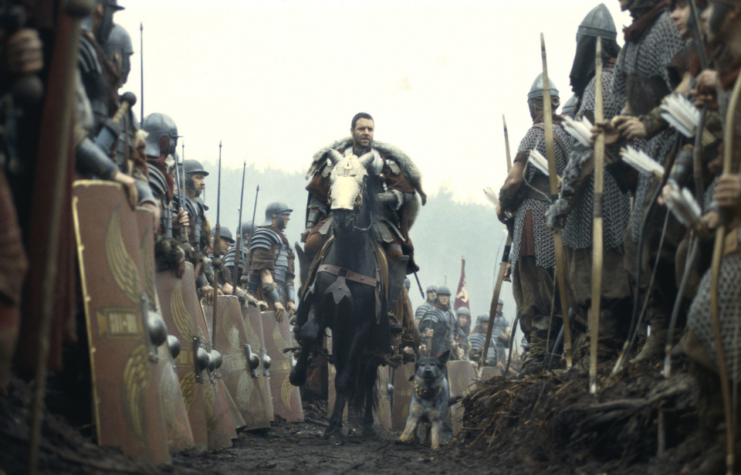
It’s hard to see any other actor playing the role of Maximus Meridius besides Russell Crowe. It’s been rumored that Mel Gibson was originally offered the role, but that he felt he was too old and passed. Ridley Scott, however, denies Gibson was considered, telling CNN that “Russell was really always my first choice.”
Whether Crowe really was Scott’s first choice or not, we’re sure glad he portrayed Maximus.
Those tigers weren’t CGI… They were real!
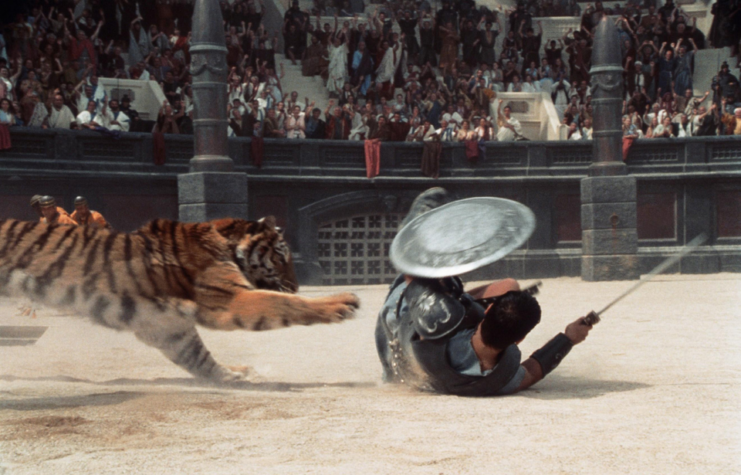
In ancient Rome, animals were seen in the Colosseum as much as humans, so it wasn’t a stretch of the imagination for Ridley Scott to have tigers in the film. That being said, those seen on-screen weren’t CGI or some other special effects: they were real.
Five tigers were on set, and, to be safe, a handler was there with a rifle and tranquilizer darts. The animals were only allowed within 15 feet of Russell Crowe and the other actors. However, due to a miscalculation, one did take a swipe at him, missing by only two feet.
Scott recalled in an interview with Variety, “[The tiger was] a big boy from tail to nose, eleven feet. you’ve got two guys on a chain with a ring in the floor to control it. Russell [Crowe] said, ‘OK, release them,’ and Russell fell back, the tiger would come out of the hole and Russell would roll out of the way, and he said, ‘F*** me, that was close.’ And I said, ‘We were there as well, Russell. Hey, you were two feet, I was like four feet.”
Production built a replica Colosseum – well, part of it
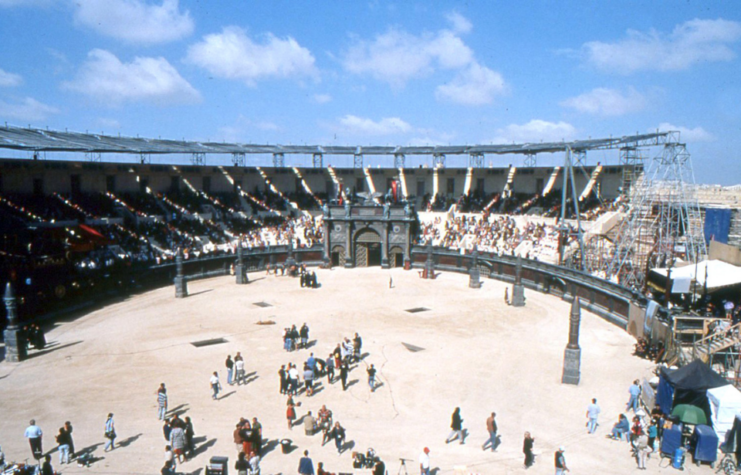
It’s a known fact that some of the greatest battles in Gladiator take place at the Colosseum. To make these intense scenes as realistic as possible, the lowest tier of the amphitheater was reconstructed from scratch, in an effort that took seven months.
The reconstruction was 52 feet tall and one-third the circumference of the original Roman structure. It included other features, such as subterranean tunnels and a basic elevator, costing a grand total of $1 million. The upper parts, including the retractable roof, were all made with the magic of CGI.
Gladiator mixes fact with fiction
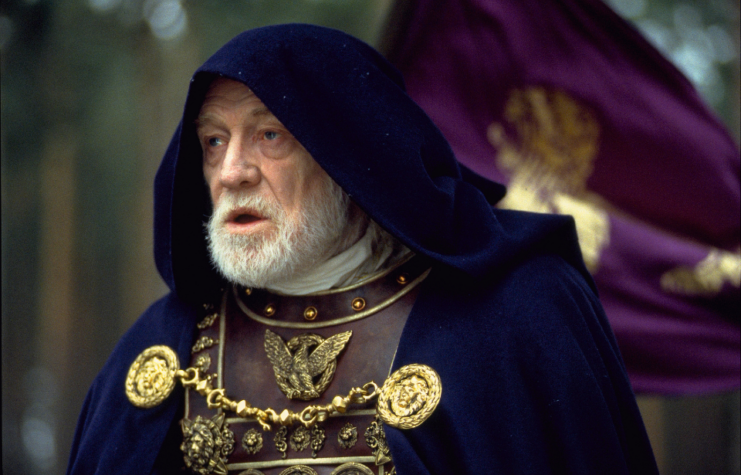
Ridley Scott is reported to have wanted Gladiator to be grounded in realism. This included costume designer Janty Yates creating over 10,000 costumes and almost 30,000 pieces of armor.
Despite this attention to detail, not everything could be 100 percent accurate. For example, the fact that gladiators endorsed products was left out, as it was believed audiences would think the idea was ludicrous and assume it was made up.
Other facts were skipped over to make the film more exciting. For instance, Commodus didn’t murder Marcus Aurelius, nor was he himself killed in the Colosseum in gladiatorial combat. Aurelius died of unknown causes, while Commodus was assassinated by his wrestling partner, who strangled him in his bath.
Oliver Reed died during production
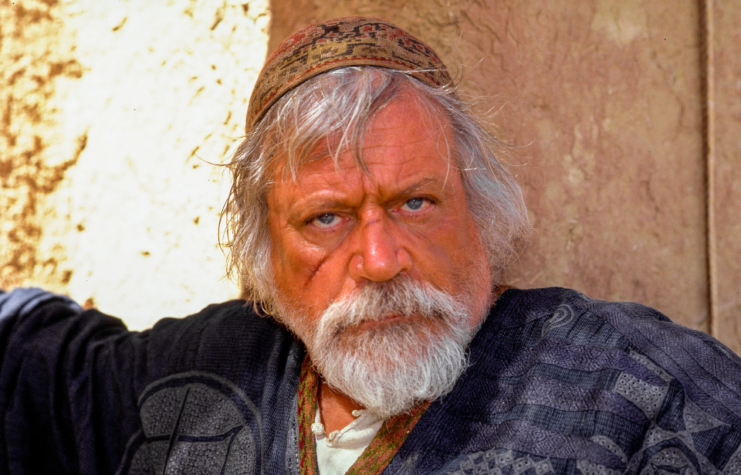
Oliver Reed played Antonius Proximo, a gladiator trainer who buys Maximus Meridius in North Africa.
On May 2, 1999, three weeks before principal photography ended, the actor died of a heart attack during a break in filming. Instead of writing him out of the film, Ridley Scott had his character’s part rewritten to die. Proximo returned to the movie through the use of CGI and a body double.
Gladiator was well-received by audiences and critics
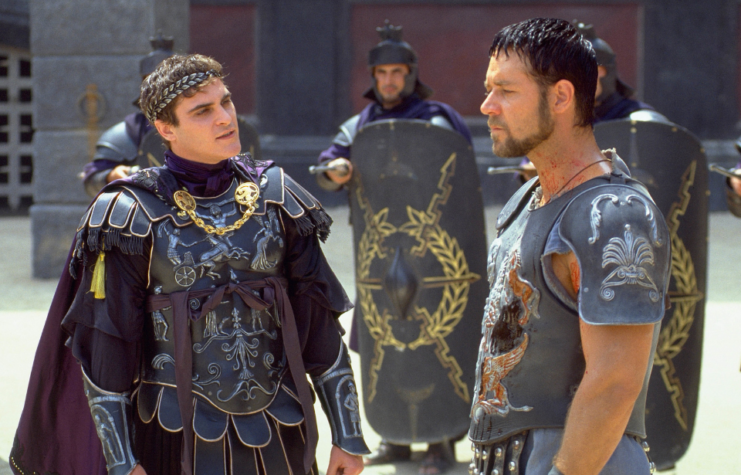
Initially, critics didn’t rave about Gladiator – Roger Ebert actually gave it two stars!
That being said, the movie won multiple awards, including the Oscars for Best Picture and Best Actor. It also won the BAFTA for Best Film; the Critics’ Choice Award for Best Picture, Best Actor and Best Supporting Actor, among many others; and the Golden Globe for Best Motion Picture – Drama.
New! Want to become a trivia master? Sign up for our War History Fact of the Day newsletter!
More from us: Behind-the-Scenes Facts About ‘Schindler’s List’
In total, Gladiator won 61 awards and was nominated for another 104. The upcoming sequel, Gladiator II, is slated to be released in the United States on November 22nd, 2024.
